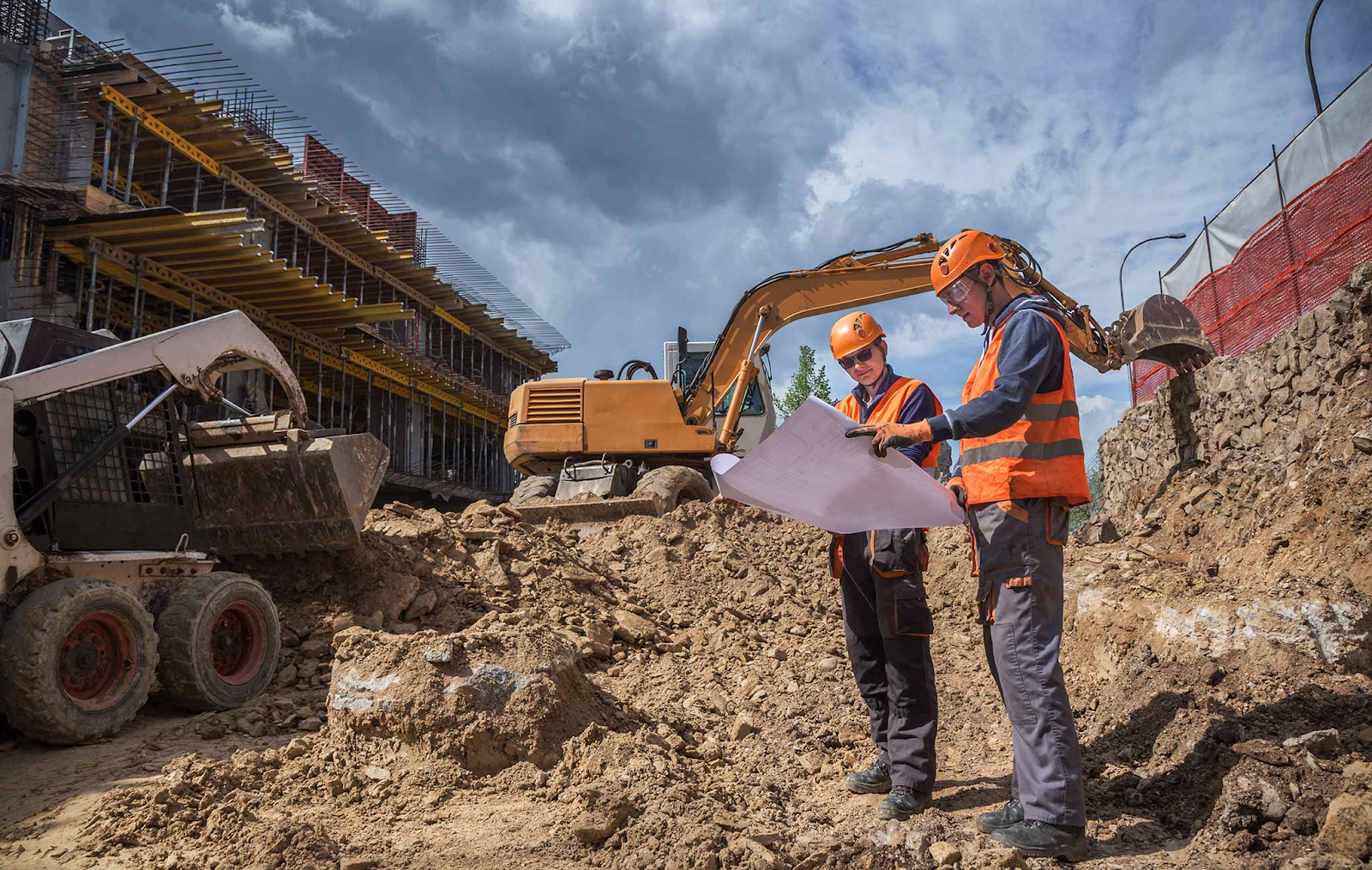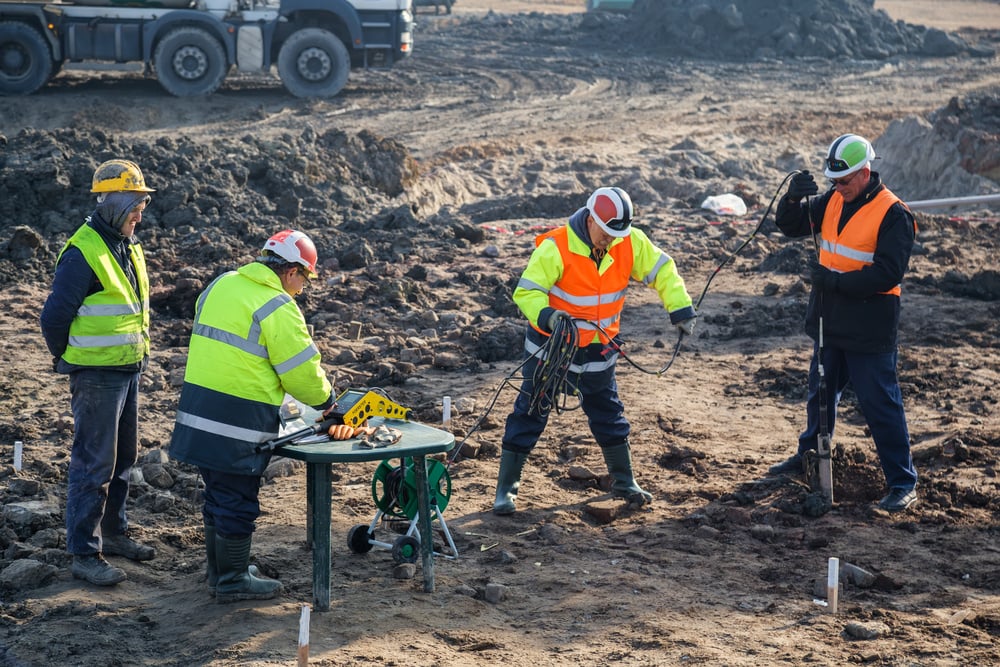The 7-Minute Rule for Geotechnical Engineering For Construction Projects
The 7-Minute Rule for Geotechnical Engineering For Construction Projects
Blog Article
3 Easy Facts About Geotechnical Engineering For Construction Projects Described
Table of ContentsGetting My Geotechnical Engineering For Construction Projects To WorkThe smart Trick of Geotechnical Engineering For Construction Projects That Nobody is DiscussingGeotechnical Engineering For Construction Projects for Beginners9 Simple Techniques For Geotechnical Engineering For Construction ProjectsTop Guidelines Of Geotechnical Engineering For Construction Projects
During the investigation, it is vital to pierce at the needed depth and the called for number of openings as per the suggestion of the Canadian Structure Style requirement. In some cases, the owner might conserve some Geotechnical Investigation cost yet finish up spending even more than the anticipated during the building and construction cost.The obligations of the geotechnical professional entail offering product testing for construction assistance. Geotechnical Engineering for Construction Projects. Geotechnical designers evaluate all the field test records to ensure that building and construction is taking place based on the project specification. Throughout building and construction, a confirmatory test for soil compaction is done on-site to guarantee that no future negotiation takes place
After the concrete is poured -7 days and 28 days- examinations are performed on concrete examples accumulated from the website to make sure that the concrete put meets the style standard. Asphalt core is taken after the Asphalt is laid and compacted to confirm that it fulfills the design criterion. All laboratory examination reports are analysed by the Geotechnical Engineer to guarantee that it satisfies the task specification.
Geotechnical Engineering For Construction Projects Can Be Fun For Everyone

Geotechnical engineering plays a vital function in making certain the stability of building and construction jobs. Geotechnical design is a crucial branch of civil design that focuses on understanding the behavior of earth products, such as soil and rock.

For a dependable structure and a smooth construction process, depend on to provide the experience you require. Call to obtain professional guidance and geotechnical solutions tailored to your following job.
The 8-Minute Rule for Geotechnical Engineering For Construction Projects
When getting started on a land advancement job, recognizing the ground below your feet is as vital as the structures you prepare to construct over it. Our Geotechnical Design group evaluate the ground, ensuring it appropriates for the recommended advancement while giving you with the details needed to meet your job goals.
Geotechnical Design takes a look at the formation of the ground, as it is the structure blocks for all jobs. Where structures require to be designed with respect to the ground conditions; ground conditions (e.g., soft ground) may require enhancing depending upon the dimension of the desired framework. Prior to structure, you need to understand about the groundwater, dirt structure, and liquefaction probability of your land.
For websites that are not attached on the neighborhood authority facilities additional site investigations would certainly be required to provide technological inputs for on-site stormwater and wastewater. We have experienced Geotechnical Designers based in each workplace, sustaining your geotechnical needs nationwide. Connect to us to review just how we can sustain your following task.
These reports are customized to satisfy the particular requirements of a Geotechnical Engineering for Construction Projects job and consist of design criteria and guidance for the construction of a series of manufactured structures. As giving consultancy services covering areas such as slope security and load-bearing capabilities for various materials, these engineers carry out study and development activities to boost methodologies, devices, materials expertise and evaluation covering entire lifecycles.
An Unbiased View of Geotechnical Engineering For Construction Projects

Nonetheless, prices of pay normally boost as your knowledge and abilities grow, with guidelines indicating a graduate starting salary of in between 18,000 and 28,000 Web Site each year in the UK. This rises to 26,000 to 36,000 with a few years of experience and after that reaching 40,000 to 60,000+ for elderly, legal or master designers.
With the ideal application it is possible to grasp the profession and gain access to a difficult yet rewarding and crucial job. A rock hound would certainly need to retrain to come to be a geotechnical designer, although there is a lot of cross-over in between both careers, which could make this simpler - Geotechnical Engineering for Construction Projects. Rock hounds need to have an understanding of dirts, rocks and various other materials from a scientific viewpoint, while geotechnical designers story their knowledge of issues such as soil and rock mechanic, geophysics and hydrology and apply them to design and environmental projects
When starting, these engineers will often tend to deal with much less complicated jobs, developing understanding and experience ready for more challenging job later. Geotechnical designers have a tendency to be experts in particular locations as they expand in experience, concentrating on particular frameworks such as railways, roads or water. These designers likewise deal with renewable resource, offshore and onshore oil and gas, nuclear power, and much more.
Geotechnical Engineering For Construction Projects Things To Know Before You Get This
The time required to come to be a geotechnical designer relies on where you are based, where you research and what level of education you intend to attain before getting in the workplace. For instance, are you mosting likely to explore an apprenticeship, take a college level or job on in the direction of a Master's or PhD? Nevertheless, generally-speaking it takes 3-4 years to reach the standard demands look at here to begin a career as a geotechnical engineer.
These procedures allow specialists to evaluate a host of dirt auto mechanics consisting of weight, porosity, void-to-solid fragment ratio, leaks in the structure, compressibility, maximum shear strength, bearing capacity and deformations. If the framework calls for a deep structure, designers will utilize a cone infiltration test to approximate the amount of skin and end bearing resistance in the subsurface.
When examining a slope's balance of shear stress and anxiety and shear stamina, or its capability to stand up to and undertake motion, rotational slides and translational slides are commonly thought about. Rotational slides fail along a bent surface, with translational slides happening on a planar surface. A professional's objective is to determine the problems at which a slope failure could happen.
Usually, findings suggest that a site's dirt ought to be dealt with to improve its shear strength, rigidity and leaks in the structure before design and building. When it comes time to lay out foundation plans, professionals are increasingly concentrated on sustainability, even more particularly how to minimize a structure's carbon impact. One method has been to replace 20 percent of a structure's concrete with fly ash, a waste item from coal fire nuclear power plant.
Report this page